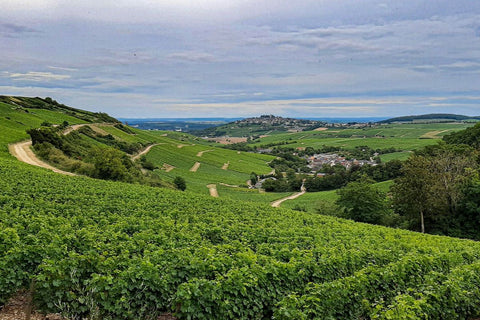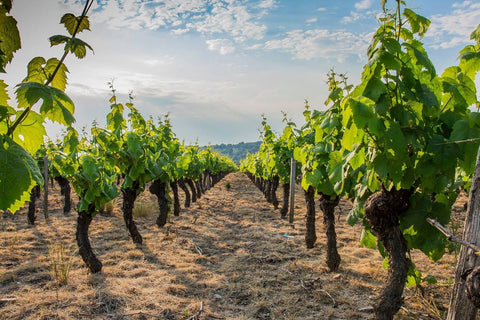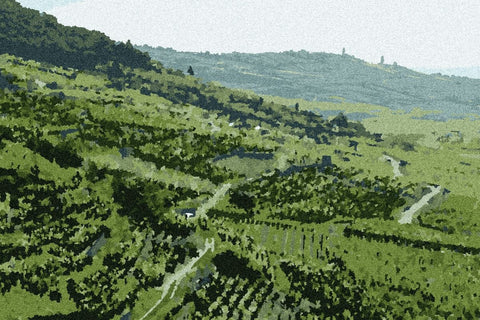Overview
Possibly no French wine region is as complex and diverse as the Loire Valley. The roughly 185,000 acres of planted vines represent 87 designated appellations, a motley assortment of unique geographical areas, soil types, climates, winemaking styles, and grape varietals. Mainstays like Cabernet Franc, Melon de Bourgogne, Sauvignon Blanc, and Chenin Blanc thrive in different regions throughout the long, meandering river valley. The Loire — the longest river in France — threads its way from its mouth on the Atlantic coast at St. Nazaire through the interior of Central France, past the world-famous Sauvignon Blanc growing areas of Sancerre and Pouilly-Fumé, all the way to the deep interior of the Upper Loire.
Evidence of winemaking in the area dates back as early as the first century AD during the Roman empire’s settlement of the region. Eventually, the French nobility in the 15th and 16th centuries built opulent palaces in the river valley. They boosted the region’s winemaking stature while local Benedictine and Augustinian monks preserved the winemaking traditions throughout this period. The Phylloxera vine pest of the late 1800s took a brutal toll on the Loire’s viticulture. Still, the rich tradition of winemaking throughout the region has been resurrected in modernity and catapulted to global prominence.
Terroir, Geography, and Climate of the Loire Valley
The growing conditions of the Loire vary tremendously with the region’s diverse geography. Moving from the inland river valley westward to the Atlantic coast, the Loire encompasses three geographic subregions: the Upper Loire, Central Loire, and Lower Loire.
The Upper Loire, containing the famous appellation of Sancerre and Pouilly-Fume, experiences a proper cool continental climate (warm, balmy summers and cold, snowy winters) with very little Atlantic Ocean influence. Here, the soil is chalky limestone from the ancient seas that once engulfed the upper Loire and is perfect for mineral-driven Sauvignon Blanc.
To the west, the centrally-located Middle Loire, which encompasses five subregions and is perhaps best known for the appellations of Anjou, Saumur, and Touraine, also experiences a cool continental climate. However, the area contains a more diverse patchwork of soil types, including a group of local chalky and fine-grained limestone varieties collectively known as ‘tuffeau.’
In the Lower Loire around the coast (also known as Pays Nantais), vines thrive in a maritime climate marked by chilly, damp, and stormy winters; cool, cloudy springs; warm, humid summers, and windy autumns. The many types of rocky, sandy soils in the area, including Massif Armorican schist, mica schist, granite sands, and gabbro (intrusive igneous rock), all drain well to allow grapevines to thrive in such a wet climate.
White Wines of Loire Valley
No white varietal is more closely identified with the Loire than Sauvignon Blanc. The white wines from the world-famous appellation of Sancerre in the eastern Loire are made from 100% Sauvignon Blanc and have become an international standard-bearer for the varietal. The flinty, minerally backbone of Sancerre whites, with their classic green apple, grassy, and gooseberry notes, among others, are hallmarks of this cool-climate Sauvignon Blanc grown on Silex (flint-rich) soils.
Sauvignon Blanc also thrives in other well-known neighboring appellations in the Upper Loire, most notably within the Pouilly-Fumé area. There, the grape also produces wines with noticeable smokey, flinty aromas (fume is the French for Smokey); these distinctive aromas are known as “pierre a fusil” (gunflint).
Chenin Blanc, another premier white grape of the Loire, is synonymous with the well-known appellations of Vouvray, Anjou, Saumur, and Touraine, among others. The grape is quite dexterous: world-class sweet wines, still wines, and sparkling are all produced. More than any other appellation, Vouvray is the spiritual home for benchmark Chenin Blanc; in this coveted appellation, wines run the gamut in style from dry to sweet and still to sparkling, each with its own character and distinctive aromatic intensity.
Melon de Bourgogne is the principal white grape found in the lower Loire in the coastal lowlands within Pays Nantais and is the sole grape used in the production of Muscadet. The grape produces inimitably citrusy wines with a trademark high acidity and salinity, making them spectacular seafood dish pairings. Muscadet is most well-known under the Muscadet Sèvre et Maine appellation southeast of Nantes on the Atlantic coast.
Red Wines of the Loire Valley
Cabernet Franc: the parent grape of Cabernet Sauvignon, Cabernet Franc’s earthy, spicy and vegetal manifestations are hallmarks of the celebrated wines produced in the central Loire, in places like Chinon, Anjou, and Saumur.
Gamay particularly in the middle Loire area of Touraine, produces crisp, tart reds and rose wines in Anjou and Saumur. In Touraine, winemakers produce single-varietal Gamay wines in light, fruity styles without cellar aging and in cellar-worthy, fuller-bodied types that will develop for years within the bottle.
Cuisine of the Loire Valley
Like its viticultural output, the Loire is well-known for its variety of dishes, cuisines, and styles. The area has a reputation as “the Garden of France,” a nod to the abundance of fresh produce throughout the river valley, including greens like Artichokes and Asparagus and the many fruit orchards that dot the landscape. The tradition of cheese-making in the Loire dates back to the Roman era.
Rillettes, a shredded paté dish found throughout the Loire, is usually made with pork but sometimes duck or salmon. A standard accompaniment to charcuterie for picnics, Rillettes are often served with Loire specialty bread, Fouée, as an appetizer. Fouee, or Fouace, is a rounded, air-filled pita-like bread unique to the central Loire.
Seafood is another integral component of Loire gastronomy, with freshwater fish like andre (pike perch or zander), alose (shad), anguilles (eel, often stewed in red wine for Matelote d’Anguilles), brochet (pike) and brème: (bream) served in a variety of styles.



